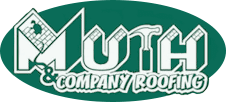As a homeowner, it can be pretty nerve-wracking when severe storms roll through. Not only do you have the inevitable yard clean-up to do, there’s always the possibility of potential property damage due to hail, high winds and fallen limbs.

While some signs of storm damage are fairly obvious, such as uprooted trees, dinged siding and dented cars, others are not so easy to see. This is particularly true when it comes to your roof, which is why it’s essential to inspect it periodically, especially during storm season. This will ensure that any roofing damage is identified and repaired as soon as possible.
Not sure what to look for? Just keep the I.O.U. method in mind.
I: Inside
An interior roof inspection should begin in the attic. First, check for sunlight shining through cracks in the plywood. This could be a sign of holes in the deck. Then, using a flashlight as necessary, look for evidence of moisture such as dark stains or streaking. Also take note of any spots that seem to be sagging, as this could indicate structural damage or weakness.
O: Outside
For an outside inspection, start by walking around the perimeter of your house, surveying as much of your roof as you can from the ground. Keep an eye out for any of these signs of damage:
-
Missing shingles. Fortunately, missing shingles are pretty hard to miss. As the top protective layer for your roof, shingles should be replaced as soon as possible.
-
Curled or cracked shingles. Any type of damage to shingles exposes the underlayment, making your roof more susceptible to leaks and eventual water damage.
-
Dark spots and patches. Dark areas on your roof are a sign that the protective granules covering your shingles have come off, exposing the underlying surface to the sun’s harsh UV rays. This can happen over time, but can also be caused by overhanging branches or hail hits.
-
Warped or separated flashing. Large hail or flying debris can easily damage the metal flashing used to prevent water from leaking into chimneys, vents and other roof penetrations. Damaged flashing will need to be repaired and resealed.
U: Up the Ladder
As tempting as it may be to climb up and inspect the roof yourself for loose nails and debris, this step is best left to the professionals. We’re trained to do it safely, and we know all the other signs to look for that are often missed by the inexperienced eye. If you really want to take a look at your roof yourself, do it while staying safely on the ground with a pair of binoculars.
Get Help From the Pros
A qualified roofing contractor like Muth & Company Roofing can advise you on whether damaged roofing can be repaired, or if a full roof replacement is advisable. If you think your roof may have been damaged by a recent storm, give us a call today at (614) 682-3060 for a FREE estimate.


